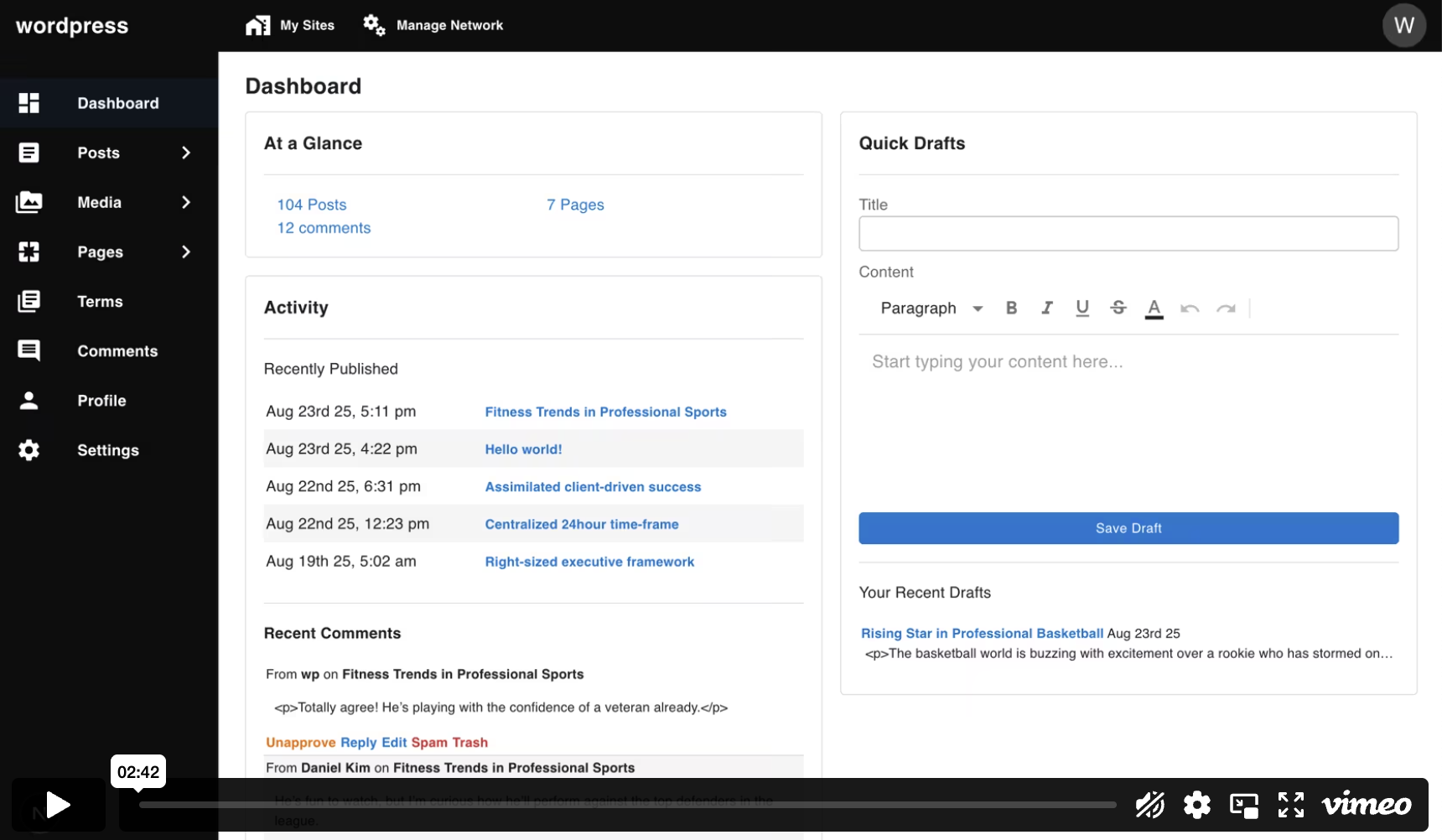Introduction
WP-Next is built with Next.js and WP-Node. It provides React components for building modern web applications that interact directly with the WordPress database.

Quick demo
Run a ready-made WP‑Next example using Docker:
docker run --rm --init -it --name wp-next-example -p 3000:3000 -v wp-next-example_public:/app/admin/public -v wp-next-example_db:/var/lib/mysql -v wp-next-example_html:/app/html rnagat/wp-next-example:latest
Visit http://localhost:3000/admin and sign in with:
Username: wp
Password: wp
Admin Dashboard
The main feature of WP-Next is the Admin Dashboard, a headless CMS that serves as an alternative to the traditional WordPress Admin Dashboard.
Admin Dashboard offers features similar to the WordPress dashboard, including:
- Posts
- Pages
- Media
- Terms (e.g., Categories, Tags)
- Comments
- Profile
- Settings
- Users and Roles
- Revisions
In multisite mode, additional features are available:
- Sites
- Blogs — Content for an individual site (posts, media, comments).
Notes
Since WP-Next is entirely written in TypeScript and React, some WordPress features are not supported, including:
- Themes and appearance settings (e.g., updating styling)
- WordPress Block Editor (Gutenberg)
- WordPress template rendering or theming APIs
- WordPress plugins
Core Libraries
Here are the main packages used by WP-Next:
@rnaga/wp-node— TypeScript-first WordPress database integration.next— Next.js framework for React SSR/SSG, routing, and API routes.@mui/material— Material UI component library for accessible, themeable UI components.@tiptap/react,mui-tiptap— TipTap rich-text editor. See https://github.com/ueberdosis/tiptap. Usemui-tiptapfor Material UI integration: https://github.com/sjdemartini/mui-tiptap
Ready to get started? Check out the installation guide.